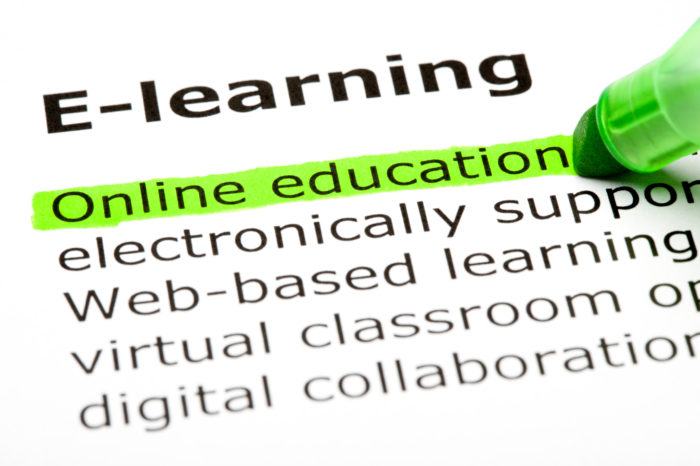Students still need to learn during the coronavirus pandemic
This op-ed appeared in The Boston Globe on March 31, 2020.
State and local officials must remove obstacles to digital learning.
By Jim Stergios
Massachusetts families shut in due to the coronavirus pandemic feel unsettled. The fears and unknowns around the lethality of the virus, the daily discussions of potential treatments, income and job loss, and the fate of loved ones, especially those over 65 with underlying medical conditions, spark intense anxiety.
On health care policy, the Legislature and the governor have made many prudent moves, such as the broad expansion of telehealth options to ensure that many more patients get high-quality medical care.
Though not as intense a topic in the public conversation, the frustration felt in households with school-aged children at the loss of structured public school learning since mid-March is palpable at school committee meetings held on platforms like Zoom and in emails to committee members.
The Baker administration’s closure of public school buildings until early May was wise, but its announcement did not require teachers to teach during this period and did not extend the school year beyond June 30.
As a result of the loss of learning, students may miss a third of this academic year.
This will have long-term consequences on students’ academic outcomes and social mobility. Disadvantaged students in elementary schools will not acquire the vocabulary and numeracy needed to succeed in subsequent grades. Juniors and seniors will miss out on material critical to graduation plans, college readiness, and AP classes, which can serve as college credits.
With this critical gap in their children’s education, parents are right to be frustrated at the lack of preparation or urgency around online learning. State and local governments spend more than $10 billion annually on public schools. Over the years, they have invested hundreds of millions in information technology upgrades, device purchases, and digital curricula. That’s money well spent if teachers teach, students learn, and we innovate.
Unfortunately, with few exceptions, the emergency response during the current COVID-19 crisis from public schools amounts to periodic assignments and suggestions of pro forma, online resources.
A few constructive suggestions: State leaders should not cling to the fiction that state assessments can be administered this year. At present, 39 states and the College Board have postponed scheduled testing. The state should not require testing when there is little teaching underway that is aligned with curriculum frameworks and tests
There is an opportunity to reverse the Luddite approach previous administrations have taken to digital learning. Eight years ago, Susan Patrick, the president of the International Association for K-12 Online Learning, panned the state Department of Elementary and Secondary Education officials for burying digital innovation in bureaucratic regulations. State Senator Will Brownsberger, the co-author of the Massachusetts law on digital learning, made the very same argument in these pages, decrying the department’s geographic restrictions on enrollment in virtual environments and refusal to allow funding to follow the child as is done in leading states.
Julie Young, the nationally recognized founder of the Florida Virtual School, noted more recently that “Massachusetts struggles to keep pace with innovative online educational offerings” available “throughout the nation.” The Florida Virtual School, which is a public school, is currently investing $4.3 million to rapidly expand its ability to serve 170,000 students in district, charter and private schools to 470,000 students by April 17, and to 2.7 million students by May 4. Meanwhile Massachusetts districts are not able to hold classes.
Today, the Department of Elementary and Secondary Education and local districts claim that unless perfect equity in distance learning can be ensured for all students, no students can learn. No problem is perfectly remediated, but this one is largely solvable for all students, including disadvantaged English-language learners, and special needs students.
A $25 million drawdown on the state’s Rainy Day Fund to purchase 120,000 Chromebooks would close the device gap. With jawboning from the governor, the state’s Internet providers would allow economically challenged households 60 days of free service to address this emergency. Redeploying teachers, some to handle larger online classes and others to engage individually with disadvantaged families and students, would address many of the equity issues.
Yes, it’s imperfect, but it is far better than what we are doing, which is next to nothing.
Public districts might want to look at the state’s Catholic schools for a model. For example, Saint Joseph Preparatory High School in Brighton, Saint Bridget School in Framingham, and Boston College High in Dorchester have all moved forward seamlessly in delivering daily, high-quality academic online lessons for their students. At Saint Joseph, online classes start at 8 a.m. daily, and students must be present via video conference for each regularly scheduled class. Regular homework is assigned and must be passed in via Google Classroom.
The same urgency to provide online instruction can be seen in a number of private and Jewish day schools.
Just as we have seen the embrace of telehealth to ensure that health care needs are met during the coronavirus pandemic, state and local officials must remove obstacles to digital learning so education needs are also met.
Jim Stergios is executive director of Pioneer Institute.



